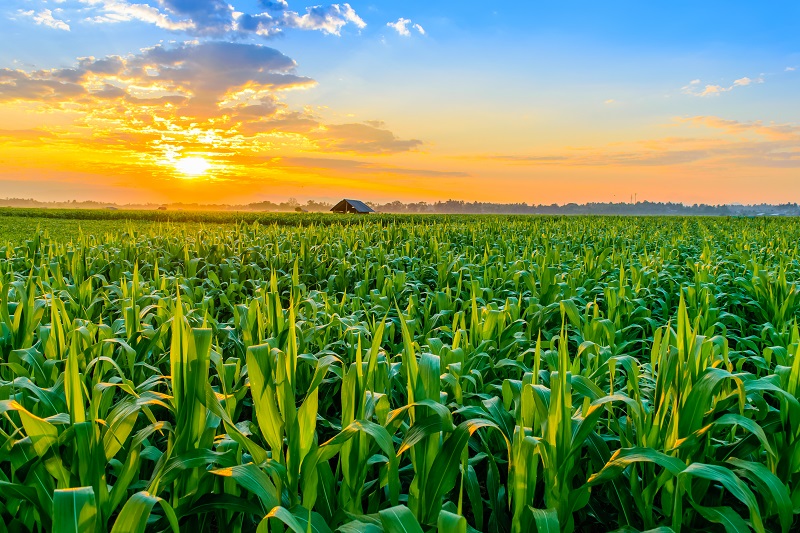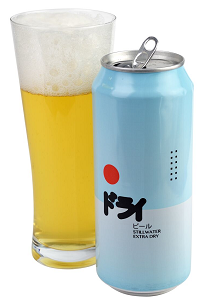Beyond Barley: Embracing Alternative Grains
Once maligned by small brewers, many now applaud the benefits of traditional adjunct grains.
Whenever the name of a widely distributed American adjunct lager lingers pejoratively on the tongue, a prevailing wisdom tends to lay the blame of any perceived “cheap” or “poor” tastes on adjuncts like corn and rice. The Brewers Association, a trade association that works to define and advocate for craft beer, once excluded brewers who used them from its coterie.
That changed in 2014.
“As time went on, from the definition being in place, I think there came a heightened sensitivity to the fact that things aren’t so black and white,” says Julia Herz, the craft beer program director at the Brewers Association.
To define adjuncts: In all cases, they are unmalted sources of fermentable sugars and can include grains, honey, fruits, agave nectar and more. So, yes, barley can be an adjunct, while rye usually isn’t (it’s most frequently used in the form of rye malt).
Some of the ideas about them are true: Adjuncts can make beer cheaper to produce, and even the early brewers who embraced them drew a flavor line. But adjuncts have been a distinct characteristic of American beer since the industrial age because they made beer better.
“I think there’s a lot of name and quality and emotion wrapped up in the use of adjuncts,” says Aaron MacLeod, who has studied brewing grains as director of the Hartwick College Center for Craft Food and Beverage in Oneonta, New York. “I think that the U.S. has a long and proud history of adjunct brewing, especially with corn and rice.”
It’s a statement with which Herz agrees, and part of the reason adjuncts now comply with the “traditional” totem of the Brewers Association’s definition.
“Adjuncts played a huge role in the history of beer styles in the United States,” she says.
The following sections explain how some of the most common adjunct grains emerged and provide a little information as to what they add to—rather than detract from—beer.
Corn
“In North American brewing, if we look at the history up to craft brewing, the major adjuncts were corn and rice,” says Paul Schwarz, a professor at North Dakota State University who studies malt and cereal grains. In the Americas, corn’s ubiquity and high starch content made it an easy choice for brewers looking to lighten up lagers made with high-protein (and limited) barley. Even some Colonial brewers turned to corn to make beer, according to Schwarz.

(File Photo)
Anton Schwarz, a Czech-born brewery consultant and manager (of no relation to the above-mentioned professor), began advocating for the use of corn in industrial brewing in the 1860s and was highly influential in its current relationship to brewing. In 1868 he immigrated to the United States, where he opened Schwarz Laboratories for research and training and edited The American Brewer.
Appropriately, it was Schwarz who recommended brewmaster J.F. Theurer to Pabst—Theurer was behind Pabst’s famous exposition-winning (and corn-including) beer in 1893.
“In theory, the starch in corn is similar to the starch in barley. So in theory you could make a beer with malt and corn that has a similar carbohydrate profile to a beer made with 100 percent malt,” says Schwarz, the North Dakota State professor.
Corn appears in classic American adjunct lagers such as Yuengling’s signature beer (now considered craft by the Brewers Association), as well as in newer-wave beers like Fullsteam Brewery’s El Toro cream ale and 3 Floyds Brewing Co.’s Corn King IPA. Corn lightens body and color while maintaining alcohol content and can be used in brewing in the form of grits, flakes or syrups.
Anthony Accardi, brewer at New York City’s Transmitter Brewing, uses corn for a cheeky twist on a farmhouse ale in his brewery’s F6.
“Basically [it’s] in some ways mimicking High Life as a reference point,” Accardi says. “We’re adding some Brettanomyces to it that would give it some funkiness or earthiness that would never be appropriate to an American light lager.”
Rice
As an adjunct, rice was used frequently among brewers in industrial America. Due to rice’s limited availability and its fussiness, however, corn overtook it in large measure toward the close of the 19th century.
Rice, like corn, is low in fats and protein and high in starch, making for beer that is lighter in color, flavor and body. But while most corn is fairly easily converted into fermentable product by the extra enzymatic activity of barley, rice needs a little something extra (higher cooking temperatures, extra bacterial enzymes) to be added into beer.
For one of the most classic beers made with rice, look no further than Anheuser-Busch InBev’s famed Budweiser. Like corn, rice’s utility is also being rediscovered among smaller producers. For instance, Melvin Brewing Co. and Monkey Paw Brewing Co. partnered for a double IPA called “This One Goes to 11,” brewed with sticky rice and Minute Rice, as a gibe at big beer.
At Transmitter, Accardi works with rice as part of a wider effort “to use all the colors on the palette” when it comes to brewing with grain. “To me there aren’t rules to what a beer should be or shouldn’t be,” he says.
Transmitter’s S8 saison uses rice to keep the beer’s body and color light and refreshing, with the rice providing a gentle canvas for the spicy saison strain and German aromatic hops in the ale.
“Some people feel like they taste a little bit of sake-ness to it. … I’m not sure that I ever perceived that,” says Accardi.
Stillwater Artisanal has also used rice to make its Extra Dry saison (though that brewery’s beer is meant to call to mind sake), and Bayou Teche Brewery uses rice to keep its snappy Ragin’ Cajuns Kölsch light and fluffy.
Wheat
Wheat’s high protein content—and also the soluble nitrogen found in wheat flour—has made it a go-to choice for brewers looking for greater head retention. Unmalted wheat helps constitute lambics and witbiers, and provides a more pronounced cloudiness and raw, grainy taste over malted wheat. That cloudiness is one reason flour has occasionally been used in making New England-style IPAs like Tired Hands Brewing Co.’s Milkshake., a collaboration with Omnipollo.
Wheat didn’t initially take off in American brewing, professor Schwarz says, because it was too valuable of a food crop to justify turning it into beer. Now, though, brewers are going beyond standard wheat to heirloom varieties like spelt to add a new level of rusticity and complexity to their beverages.
Let’s be clear: German hefeweizen and Berliner weisse beers predominantly use malted wheat, not adjuncts. But in the cases of beers like Blue Moon or Lindemans Cuveé René, unmalted wheat helps produce the fluffy head and bready taste.
Oats
Some papers suggest the use of oats in European brewing was fairly present until the Reinheitsgebot (the German beer purity law). It would make sense given the context of how other adjuncts emerged: Oats are a hardy crop that grow well in the cold and wet climes of countries like Finland, Germany and the United Kingdom.
The most common style of beer to which Schwarz has traced the use of oats would be the British oatmeal stout, where he has found references dating back to the 1800s. A distinctly smooth and creamy style, the beer has a distinguished mouthfeel that comes from oats’ high levels of a non-fermentable fiber called beta-glucan, Schwarz says. Beta-glucan not only produces viscosity in beer, it also happens to be the thing that Cheerios advertises as heart-healthy.
The oats in Terrapin Beer Co.’s Rise-n-Shine coffee oatmeal stout, which is aged in Tennessee whiskey barrels, serves as an example of how oats can give what might otherwise be a syrupy beer a lighter texture similar to aerated cream. Oats also serve as a base to the beer’s intense nose and flavor profile, laying down an oatmeal-like canvas to bind together notes of bittersweet chocolate, dark fruit and warming booze.
Recommended usage levels of oats are low in beer. One 1943 research paper argues that around 10 percent in the mash is adequate, and only with “good malt.” And Randy Mosher, a columnist for this magazine and author of books such as The Brewer’s Companion and Radical Brewing, has suggested in his writing oat usage of somewhere between 5 and 10 percent.
Accardi says he adds oats to beers like his G2 Belgian pale ale if “we want to give it a little extra something in terms of how it feels.”
“We try to consider all the aesthetic angles,” he continues. “We’re still using mostly barley, ’cause that’s what
beer is.”
 Buckwheat, The Pseudo-Grain
Buckwheat, The Pseudo-Grain
Though occasionally mentioned in the same breath as spelt, emmer and durum, one ingredient showing up in beer recently, buckwheat , isn’t actually a grain at all.
“It could be considered a pseudocereal,” said Prof. Paul Schwarz of North Dakota State University. Cereal grains come from grasses; buckwheat does not. However, buckwheat does call to mind a profile similar to rustic wheat in beer, and can be malted or used as an adjunct.
“Buckwheat is really beautiful […] with an earthiness and nuttiness that are not really found in the same way in much else,” said Brian Buckman, co-founder and head brewer of Illuminated Brew Works in Chicago, Illinois, whose 2016 Pareidolia Belgian Pale Ale incorporates unmalted buckwheat, Asian pears and amchur (dried mango powder).
Buckman described buckwheat as “a very big, bold flavor,” and bold it is indeed (it’s also the reason Buckman uses pears in Pareidolia as a balance). Close your eyes while drinking Pareidolia, and it’s easy to imagine a freshly cut hunk of whole-grain levain bread in place of your beer glass.
What About Rye?
Rye use dates roughly back to medieval times, appearing in German roggenbiers and assorted Scandinavian fermented beverages. But given that most rye used in beer is malted, rye is not usually an adjunct.
The usage of rye in Europe fell out of favor around the start of the 20th century, said Paul Schwarz, because rye is notoriously difficult to work with. It has a similar high protein content to wheat, which increases the difficulty of sparging, and also contains high levels of pentosan, a complex carbohydrate that makes rye wort “thick and sticky.”
U.S. brewers are re-embracing the grain for its distinct spiciness, adding it to beers from stouts to saisons and IPAs for balance and complexity.
Anthony Accardi, of New York’s Transmitter Brewing, adds rye to his NY1 Danko Rye saison for “a little edge.”
“In terms of layering the spice from the grain and the yeast choice, and then maybe picking a hop that has a peppery finish to it […] you’re blending distinct but various layers of a certain flavor,” he says.
Bo McMillan is the former editorial assistant for All About Beer Magazine, and is currently pursuing his PhD in English and Comparative Literature at Columbia University.
Beers Brewed With Rice

Stillwater Extra Dry
ABV: 4.2% | Sake-Style SaisonTasting Notes: Who would have thought an American brewery’s take on a Belgian style inspired by Japanese rice wine would work so well? Yet it does. From an effervescent head comes the distinct aroma of lemongrass. It’s there in the sip as well, with just a hint of an herbal note (dill?). Overall, though, the beer is remarkably clean and easy drinking, and given the name it’s no surprise it finishes dry. –Daniel Hartis

Lagunitas Sakitumi
ABV: 9% | Strong Ale w/ Sake Yeast & RiceTasting Notes: This lands less exotically than it sounds. Though there’s a touch of warming alcohol near the perimeter, this ultimately feels like a smooth, well-executed (double?) IPA. The rice additions help lighten the mouthfeel, sake yeast appears to add subtle almond throughout, and its hops take center stage: dank, citrusy and layered, like the best of Lagunitas offerings. –Ken Weaver

Leave a Reply